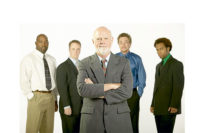Despite an uptick in national disasters over the past few years, members of the general public still admit they are not fully prepared, a new survey finds. Fewer than half of national respondents to an Ipsos survey have obtained or accessed basic information to prepare for a disaster such as emergency responder contact info, evacuation routes or shelter locations. During a disaster, they rely more on traditional communications channels such as websites, radio and TV, as opposed to social media, but want better options.
The general population feels most prepared for blizzards (51 percent), floods (47 percent) and hurricanes (33 percent) and least prepared for shootings (15 percent).
Recent post-disaster conversations have focused on social media innovations to address the next disaster —functions like Facebook’s “safe check-in” or live-tweeting from inside the eye of a storm. Despite these conversations, the survey respondents were surprisingly traditional in their preferred communications channels.
Respondents (83 percent) agree that technology plays a critical role in disaster preparedness, particularly in synchronizing efforts and data sources between first responders, aid organizations and other relief personnel. However, respondents (51 percent nationally) are less likely to rely heavily on social media during an event, preferring websites and online resources (76 percent), radio (63 percent) and television (55 percent). Respondents believe that information about shelters, contacts, what to pack and disaster locations would be most helpful to prepare, and would also prefer a text messaging service that provides disaster updates or even a telephone hotline.
Ipsos and Booz Allen Hamilton surveyed more than 1,000 respondents nationally and an additional more than 300 each in California, Florida and Texas, states particularly vulnerable to disasters. Respondents were queried about their preparedness and the value of technology in preparing for and surviving a variety of disasters.
Other Survey Results Include:
- While less than half of respondents are prepared with certain specific information, nationally 19 percent feel generally very prepared, and 51 percent feel somewhat prepared for disasters.
- About 22 percent of respondents feel not very prepared for disasters, five percent are not at all prepared and three percent are not sure.
- Respondents generally feel most prepared for disasters more typical to their state. California residents feel most prepared for earthquakes (62 percent) and wildfires (44 percent); Florida feels most prepared for hurricanes (89 percent), and Texas respondents feel most prepared for floods (57 percent).
- About 12 percent of national respondents do not feel prepared for any disaster listed in the survey.
- Food and water are the top two items people have on hand for emergencies.








